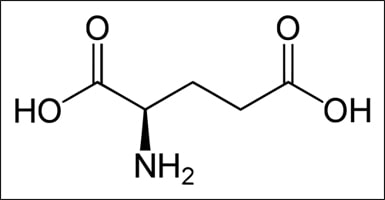



L-Glutamic acid [CAS 617-65-2] is among the non-essential amino acids naturally synthesized within the human body. Its applications span various sectors, including medicine, food processing, and industry. NANJING FOODCHEM SCIENCE CO., LTD, based in China, is a reliable supplier of L-Glutamic Acid. If you have any inquiries or encounter issues, please don't hesitate to reach out via email at info@alchemist-chem.com. We commit to responding to your messages within one working day.
| Molecular Formula | C5H9NO4 |
| CAS Numbers | 56-86-0 |
| Solubility | DMSO |
| Purity | 98% by HPLC |
| Packing | |
|---|---|
| Storage | Powder -20°C 3 years 4°C 2 years;In solvent -80°C 6 months, -20°C 1 month |
| Shipping | Room temperature in continental US; may vary elsewhere |
Tel: 0086-25-52397805
Email: info@alchemist-chem.com

| Common Names | L-glutamic acid | ||
|---|---|---|---|
| Structure |  |
||
| CAS No. | 56-86-0 | Boiling Point (℃) | 333.8±32.0 °C at 760 mmHg |
| Molecular Weight | 147.129 | Melting Point (℃) | 205 °C (dec.)(lit.) |
| Density | 1.4±0.1 g/cm3 | Vapor Specific Gravity | N/A |
| Molecular Formula | C5H9NO4 | Flash Point (℃) | 155.7±25.1 °C |
| Solubility | N/A | Autoignition Temperature (℃) | N/A |
| Personal Protective Equipment | Eyeshields;Gloves;type N95 (US);type P1 (EN143) respirator filter | ||
|---|---|---|---|
| Hazard Codes | T+:Very toxic | ||
| Safety Phrases | S1-S28-S45 | ||
| RIDADR | NONH for all modes of transport | ||
| WGK Germany | 3 | ||
| SYMPTOMS | PREVENTION | FIRST AID | |
| Inhalation | Cough. Sore throat. | Use local exhaust or breathing protection. | Fresh air, rest. |
| Skin | Redness. Burning sensation. Itching. | Protective gloves. | Remove contaminated clothes. Rinse and then wash skin with water and soap. |
| Eyes | Redness. Pain. | Wear safety goggles. | First rinse with plenty of water for several minutes (remove contact lenses if easily possible), then refer for medical attention. |
| Ingestion | Abdominal pain. Nausea. Vomiting. | Do not eat, drink, or smoke during work. Wash hands before eating. | Rinse mouth. Induce vomiting (ONLY IN CONSCIOUS PERSONS!). Refer for medical attention. |
| Description | (S)-Glutamic acid acts as an excitatory transmitter, shows a direct activating effect on the release of DA from dopaminergic terminals. | ||
|---|---|---|---|
| Target | Human Endogenous Metabolite | ||
| In Vitro | DL-Lysine (Lys) is a high affinity, basic amino acid substrate for amino acid transporter b0,+ with Km value ranging from 100-400 μM[1]. | ||
| References | [1]. Giorguieff MF, et al. Presynaptic effect of L-glutamic acid on the release of dopamine in rat striatal slices. Neurosci Lett. 1977 Oct;6(1):73-7. | ||